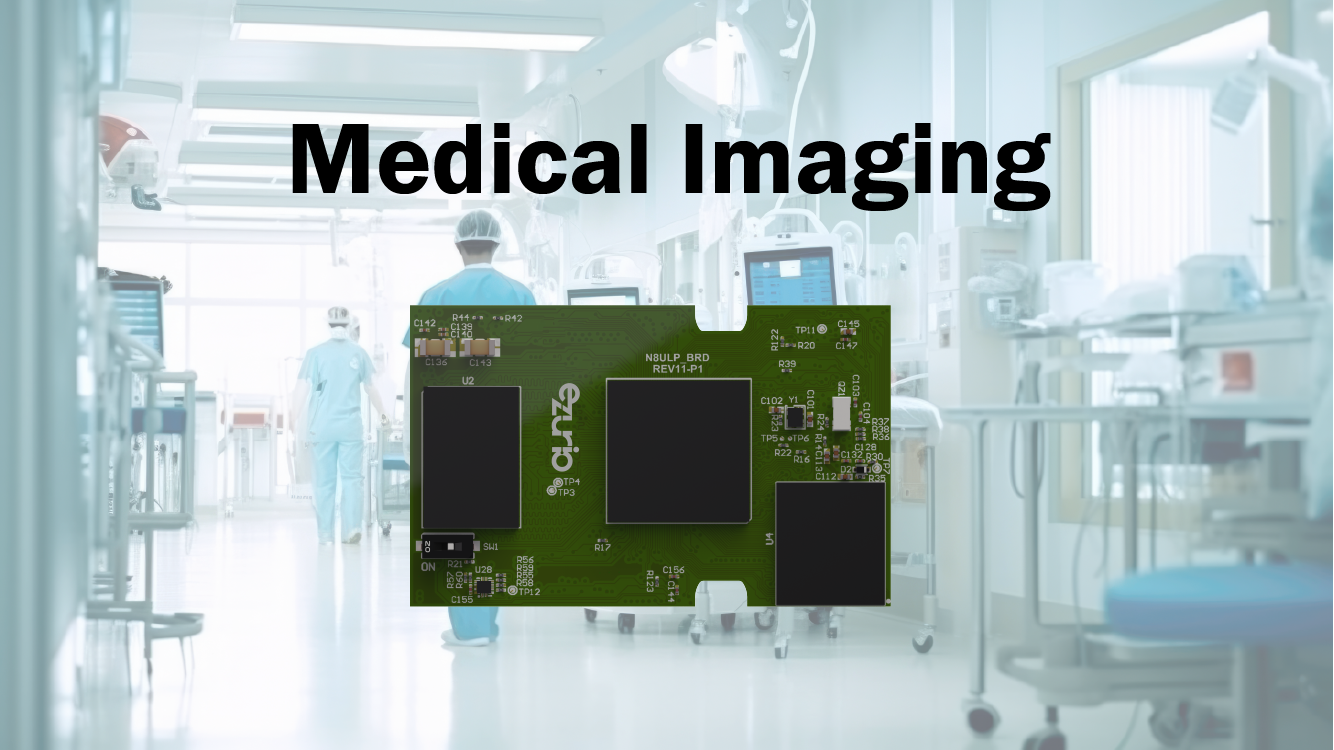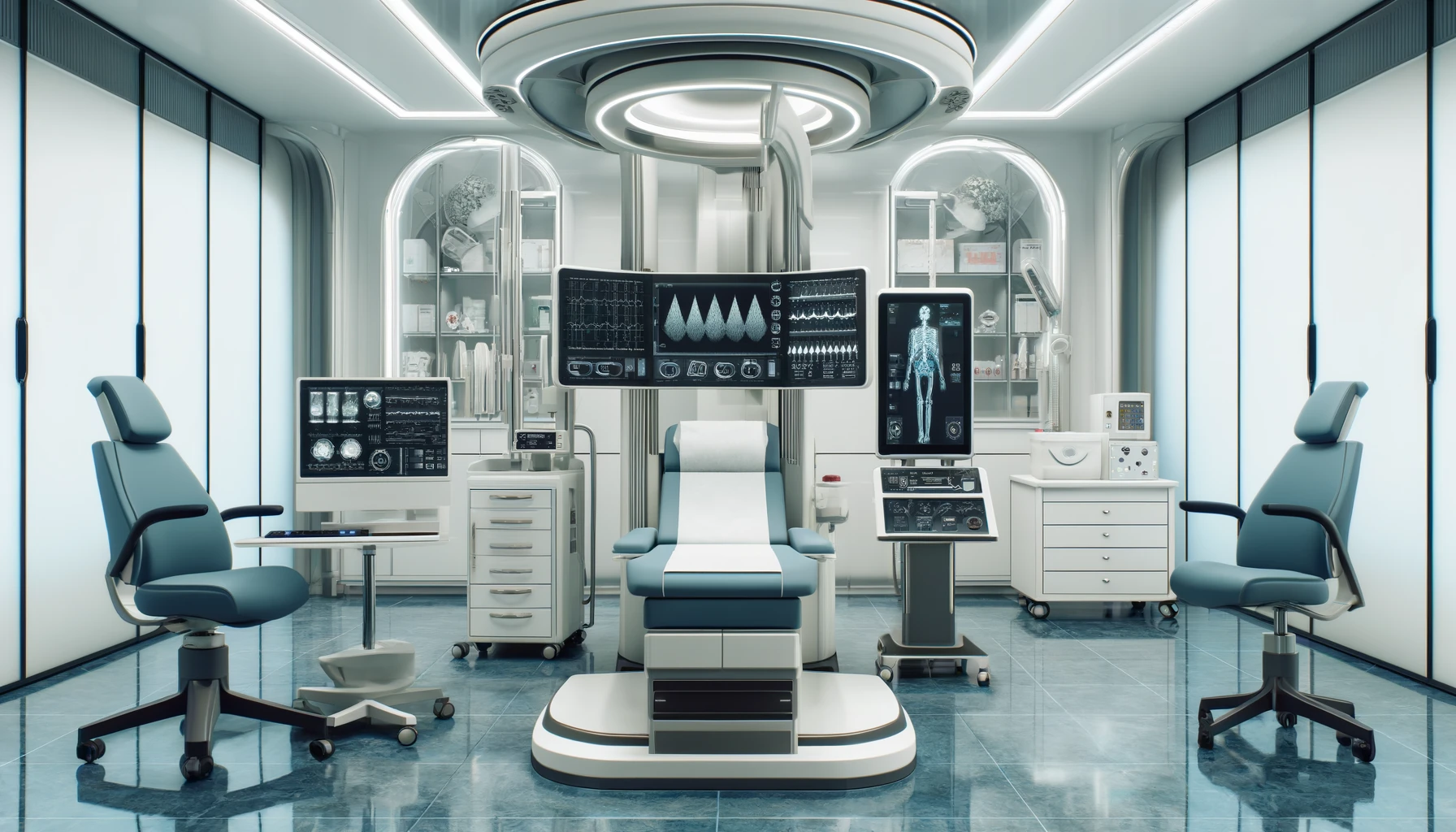
Redefining Medical Imaging
To address the challenges faced by medical imaging devices, a solution that is low power, compact, peripheral-rich, and robust is needed. Ezurio’s new Nitrogen8ULP System-on-Module (SOM) was designed for smart medical IoT devices. At its core lies the low power NXP i.MX 8ULP applications processor, which features dual ARM Cortex-A35 cores providing an optimal balance between power and performance. Alongside a 216 MHz Cortex-M33 MCU, the 8ULP processor helps to execute signal processing algorithms necessary to generate real-time high-resolution images.
As we continue to describe the advanced features needed for medical imaging, let’s use an analogy to help visualize this industry: imagine you’re at a concert, and the band on stage represents the medical imaging devices. Each musician plays a crucial part, much like the different components required for high-quality, efficient, and secure medical imaging devices. In this scenario, the Nitrogen8ULP SOM and the i.MX 8ULP processor are the state-of-the-art sound system, equipped with the latest technology to allow every note to be crystal clear quality, without any distortion or delays.
Maximizing Power & Smart Imaging
Energy efficiency in imaging devices, such as handheld ECG monitors, help run the device for extended periods of time on battery power. The Nitrogen8ULP SOM optimizes power consumption across its multiple cores delivering 20 different power modes, combined with power efficient LPDDR4 RAM and eMMC storage, to be able to continuously monitor a patient’s heart activity for an entire day on a single charge. This makes it feasible for use in locations where power sources are scarce, making it an invaluable tool for field medical teams. In the concert analogy, the energy flex architecture of the Nitrogen8ULP SOM is like the sound system’s ability to adjust its output based on the size of the venue, whether it’s an intimate acoustic set or a full-blown rock concert. It ensures that energy is used efficiently, preserving the system’s power for the length of the show, mirroring how portable medical devices need to conserve battery life without compromising performance.
One of the biggest components transforming modern healthcare is the integration of AI and machine learning. AI-based image analysis allows digital X-ray systems to use algorithms to detect and highlight potential fractures or abnormalities directly on the imaging device to drastically reduce diagnostic times. The Nitrogen8ULP’s heterogenous processing architecture can allocate different tasks to the most suitable processing units, like image and sound recognition through the Cortex-A35 cores while the Cortex-M33 can monitor real-time data from sensors. By allocating tasks according to the strengths of the cores, devices with the Nitrogen8ULP can achieve a balance between executing advanced AI algorithms and maintaining real-time responsiveness and power efficiency.
Securing Health Data
Along with its hardware benefits, the Nitrogen8ULP SOM helps the healthcare industry meet strict data protection standards, which are crucial for protecting patient information. This resembles a security team at a concert, carefully screening each attendee – or in this case, every packet of medical data – to block unauthorized access and ensure a secure experience for all. The secure boot and encrypted storage features of the Nitrogen8ULP acts as a robust defense, protecting patient data during both transmission and storage phases. Picture a scenario where an MRI machine, located in a small, rural clinic, is capturing and transmitting brain images to a specialist in a one of the busiest hospitals in the country, all made possible through the Nitrogen8ULP’s capabilities. At Ezurio, leveraging our decades of experience in the healthcare sector, our SOMs can add additional protection through Summit Suite Security, benefiting from FIPS 140-2 Level 1 validation and incorporating additional security features such as Chain of Trust device security and software vulnerability monitoring.
The Nitrogen8ULP SOM from Ezurio is an essential embedded module for medical imaging. By addressing critical needs for portability, energy efficiency, and data security, this SOM stands as a central piece in the pursuit of advanced, patient-centered medical care. As the medical industry continues to progress and use new technologies, Ezurio paves the way for next-generation medical imaging, enabling care providers to deliver superior support anytime, anywhere.
About our Nitrogen8ULP
Ezurio stands at the forefront of offering innovative solutions that address the evolving needs of medical imaging devices. As a trusted partner in embedded IoT, our Nitrogen8ULP System-on-Module helps to enhance next-generation devices. With Ezurio, companies gain not just a provider, but a collaborator committed to driving their success in adopting efficient and safe healthcare practices.
Learn more at: https://www.ezurio.com/system-on-module/nxp-imx8/nitrogen8ulp-som
